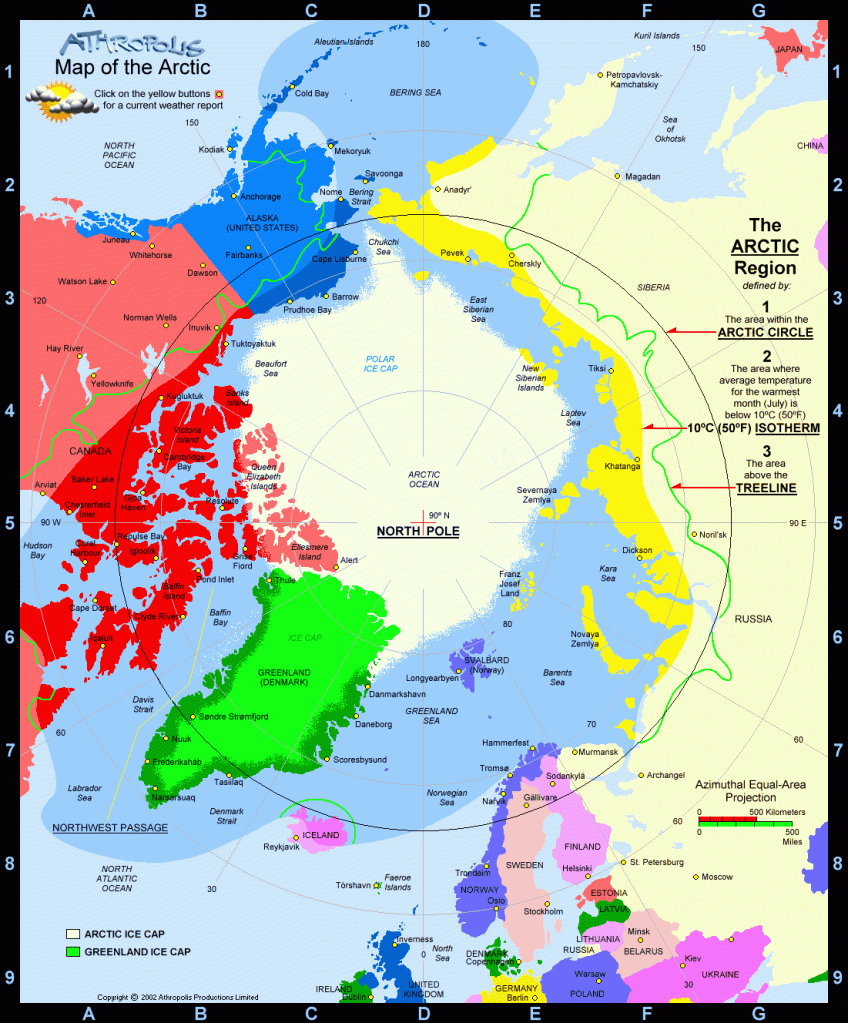Why Greenland Matters
All of a sudden, Greenland is in the news. Trump wants to buy it from Denmark. Why?
There are actually many reasons why the United States - and other major powers - want control of Greenland. The island is owned by Denmark but despite Danish welfare providing approximately $600Million/year to Greenland's 56,000 people (over $10K/person/year) infrastructure is underdeveloped, prices are high, and opportunities are few. 20,000 of the more skilled and educated Greenlanders have moved to Denmark. Those remaining in Greenland would prefer independence, but realize they cannot afford it. On their own they cannot develop Greenland's resources or protect the island from Russia, China, or the United States.
Settled thousands of years ago by the Inuit people of Arctic North America, Greenland went through a prolonged cold spell and had been abandoned when discovered by Norwegian Vikings under Erik the Red in 984 A.D.
Norwegian colonies struggled to survive for about four centuries before the weather turned colder again and the Norse slowly abandoned Greenland starting around 1380. In 1584 the British Navy visited Greenland and found it uninhabited, though there is evidence the Inuit were starting to come back, establishing the local Thule Culture. In 1721 Denmark (which had taken over Norway and technically owned the island since 1380) finally started to send Danish colonists.
Genetic testing shows about 2/3 of Greenland's population is mixed Inuit and Danish. Including all Greenlanders, the breakdown is about 75% Inuit background, and 25% European, with the Danes contributing over 90% of the European component, Norway 2%, Sweden and Finland each 1%. Greenlanders have the most in common with the populations of Canada, Denmark, Norway, Britain, and the United States - and if they must make a deal to be taken over by anyone outside Denmark would prefer that it be the U.S. or Canada.
China would love to buy their way in because owning even a piece of Greenland's Arctic territory would give China a say in many international agreements about the Arctic in which they currently have no say regarding the region's development, mineral rights, oil reserves, or shipping rights. China has no Arctic territory and is not a member of The Arctic Council (Russia, Canada, The United States, Norway, Sweden, Finland, Iceland, and Denmark).
Placing radar bases, missiles or bombers in Greenland puts them in much closer range to New York (2,000 miles) London (about the same) or even St. Petersburg and Moscow - so every major power would want to own it and prevent enemies from owning it. Imagine the extra leverage China would have during an invasion of Taiwan if their military had bases in Greenland and could threaten U.S. cities from close range. The United States has had bases there since WWII, and the island's location could be even more geo-strategically important in WWIII.
Arctic shipping routes also become a reality in the 21st century.
Summers already give an ice free route from northern Alaska through Canadian islands then southwest of Greenland down to the U.S. east coast. As the climate gets warmer, there will eventually be an ice-free route to Europe going north of Greenland. This could reduce shipping time from Beijing or Tokyo to London or Amsterdam down to two weeks, instead of the six weeks it could easily take on the much longer route through the Suez Canal.
Greenland has many mineral resources including those known to be underground near the already explored coasts, plus a vast interior that will be easier to exploit as ice melts and technology improves. Rare Earth elements are especially important to the United States, as most developed deposits are in China, with some in Kazakhstan.
Greenland's fishing rights and extensive maritime claims to yet undiscovered oil and gas claims are also of high but unknown value.
And let's not forget the pole shift angle. If the theories of Chan Thomas, Ben Davidson, and countless others are correct, the next North Pole position will be in the Bay of Bengal - the Magnetic North Pole has been fast-tracking a path in that direction already.
If the crust moves as predicted such that the axial pole and magnetic pole realign at the Bay of Bengal (where it has been previously) this would put Greenland and Antarctica at the equator again. Antarctica is strangely protected from visitation and exploration - possibly because governments have found evidence of a previous human civilization that thrived there prior to the last pole shift. Greenland could also have hidden evidence under the ice. And both could be prime real estate in the new world after the coming pole shift:
As this image based on an interactive globe/map shows, Greenland will eventually be a tropical paradise that makes California seem small, cold, and poor by comparison. $100Million investment for a pristine tropical island the size of Western Europe would be a pretty good long term investment - assuming you have knowledge allowing you to foresee the future arrangement of the world's land masses.
Even if we ignore the pole shift angle - there are many conventionally acceptable reasons why Greenland is a worthy investment. The United States has made previous attempts to buy it in 1867 and 1946. Trump almost struck a deal in 2019; expect him to try again in 2025. After Donald Trump Jr’s recent trip to Greenland, the president-elect posted on Truth Social stating: “Greenland is an incredible place, and the people will benefit tremendously if, and when, it becomes part of our Nation.” If he doesn't succeed with an American purchase soon, expect Canadian, Russian, and Chinese offers.









